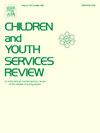Knowledge of and access to contraceptive information and services among teenagers with child welfare involvement: A descriptive study across the transition to high school
IF 2.4
2区 社会学
Q1 FAMILY STUDIES
引用次数: 0
Abstract
Despite disproportionate rates of childbearing among youth with child welfare involvement, few studies have examined whether this population receives contraceptive information and knows how to access services. This longitudinal study examines responses from 245 youth with child welfare involvement (i.e., youth with an open child welfare case due to maltreatment) before and after the transition to high school. The same youth were interviewed at the end of 7th or 8th grade and roughly 2.5 years later about whether they received contraceptive information or education, if they knew how to access contraceptive services, if they received services, and sources of that information/services. By 10th /11th grade, most participants reported knowing how to access contraception and over half of females had received contraception. However, 18 % of females and 54 % of males had never received contraceptive education or information by 10th/11th grade. Schools were the dominant (often only) source of contraceptive education or information for males, while medical providers and schools were more common for females. Males were less likely than females to receive contraceptive education or information, know how to access services, or receive services. Contraception was perceived as, and in many cases was, accessible once youth were in high school. However, contraceptive information and education was received late and was incomplete for many youths irrespective of biological sex; for males, it was often never received. Implications for adults working with this population are discussed.
涉及儿童福利的青少年对避孕信息和服务的了解及获取途径:高中过渡时期的描述性研究
尽管涉及儿童福利的青少年的生育率过高,但很少有研究对这一人群是否获得避孕信息以及如何获得服务进行调查。这项纵向研究考察了 245 名涉及儿童福利的青少年(即因虐待而未结儿童福利案件的青少年)在升入高中前后的反应。这些青少年在 7 年级或 8 年级结束时以及大约 2.5 年后接受了采访,内容包括他们是否接受过避孕信息或教育、是否知道如何获得避孕服务、是否接受过服务以及信息/服务的来源。到十年级/十一年级时,大多数参与者都表示知道如何获得避孕药具,超过一半的女性接受过避孕药具。然而,18% 的女性和 54% 的男性在十年级/十一年级时从未接受过避孕教育或避孕信息。学校是男性获得避孕教育或信息的主要来源(往往是唯一来源),而医疗机构和学校对女性来说更为常见。与女性相比,男性接受避孕教育或信息、知道如何获得服务或接受服务的可能性较低。人们认为,在很多情况下,只要青少年上了高中,就可以获得避孕药具。然而,对于许多青少年来说,无论其生理性别如何,他们接受避孕信息和教育的时间都很晚,而且也不完整;对于男性来说,他们往往从未接受过避孕信息和教育。本文讨论了对从事这一人群工作的成年人的影响。
本文章由计算机程序翻译,如有差异,请以英文原文为准。
求助全文
约1分钟内获得全文
求助全文
来源期刊

Children and Youth Services Review
Multiple-
CiteScore
6.30
自引率
6.10%
发文量
303
期刊介绍:
Children and Youth Services Review is an interdisciplinary forum for critical scholarship regarding service programs for children and youth. The journal will publish full-length articles, current research and policy notes, and book reviews.
 求助内容:
求助内容: 应助结果提醒方式:
应助结果提醒方式:


